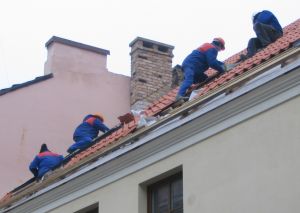According to a recent article from ABC News, the United States Occupational Safety and Health Administration (OSHA) is conducting an investigation into how and why a caretaker at a New England animal sanctuary was killed when trampled by an Elephant.
 The retired veterinarian was working as a caretaker for two elephants when he decided to walk into their enclosure. His body was later discovered in a barn after being stepped on by one of the elephants in his care.
The retired veterinarian was working as a caretaker for two elephants when he decided to walk into their enclosure. His body was later discovered in a barn after being stepped on by one of the elephants in his care.
While it is believed that this was merely an accident, OSHA is investigating why the worker entered the elephant’s habitat. After a worker was killed at large animal sanctuary in Tennessee, that facility required protective barriers to be used at all times when interacting with the animals. Protective barriers (formally called protected-contact barriers) are large metal bars that protect the workers from being crushed while working on the elephants.
OSHA has made it clear that far too many people have been injured or killed in accidents at zoos, and OSHA is conducting an investigation into the circumstances surrounding this tragic workplace accident. The director of the of the elephant sanctuary has been quoted as saying that if workers were required to use the protective barriers and follow a rigid set of safety rules, there would be an effective way for them to interact with the elephants and provide therapy.
Others interviewed said that many of the older caretakers feel that the methods used in the past are safe, and there is no need for any additional safety precautions.
While people typically think of workers’ compensation in terms of an on-the-job injury and not an accident that involved the death of a worker, our workplace injury attorneys in Boston understand that a claim for workers’ compensation death benefits is often the appropriate remedy.
Continue reading

 Massachusetts Workers Compensation Lawyers Blog
Massachusetts Workers Compensation Lawyers Blog




 Inspectors found employees working on top of a two-story residential roof without fall protection equipment. According to federal regulations, roofing workers are to be provided with fall protection equipment. In this case, they were without such safety equipment due to a deliberate failure on behalf of the employer.
Inspectors found employees working on top of a two-story residential roof without fall protection equipment. According to federal regulations, roofing workers are to be provided with fall protection equipment. In this case, they were without such safety equipment due to a deliberate failure on behalf of the employer. According to a recent news article from
According to a recent news article from  The retired veterinarian was working as a caretaker for two elephants when he decided to walk into their enclosure. His body was later discovered in a barn after being stepped on by one of the elephants in his care.
The retired veterinarian was working as a caretaker for two elephants when he decided to walk into their enclosure. His body was later discovered in a barn after being stepped on by one of the elephants in his care.

 As your
As your  A recent
A recent